Galvanic Isolation
If you isolate the DAC from the computer noise from the computer can’t enter the DAC.
USB power can be pretty dirty.
Exasound measured the noise level with and without galvanic isolation of the USB.
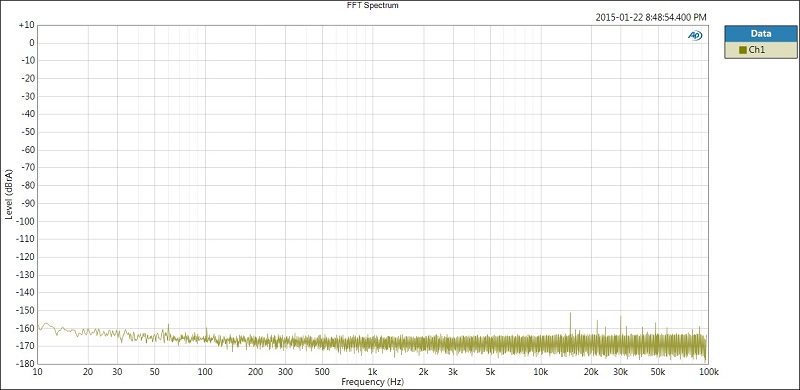
FFT spectrum (1024K points averaged 8 times) showing the noise floor measured on the e12 DAC RCA line outputs. The e12 DAC is connected with a standard USB cable to a low-cost desktop PC. The noise floor is extremely clean. There are no visible traces from the computer high-frequency noise usually transmitted via the USB connection. The power line related noise (60Hz and its harmonics) is below -157 dB (0.0000014%).
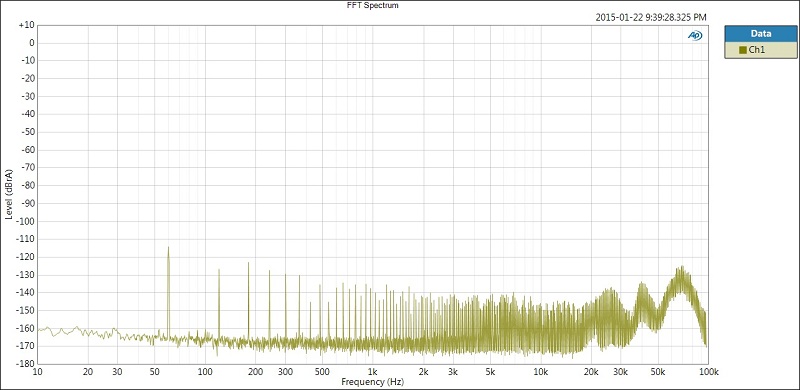
For comparison, the same measurement is taken without Galvanic ground isolation. The noise level is increased by 30dB. This experiment clearly shows the benefits of using Galvanic isolation.
Source: Exasound
Obvious the pic above show a substantial increase in the noise floor if you don’t isolate the DAC from the computer.
On the other hand even without galvanic isolation the noise is below -120, a very low value.
Makes me wonder if the difference is audible at all.
Intona also published an example of using their USB isolator.
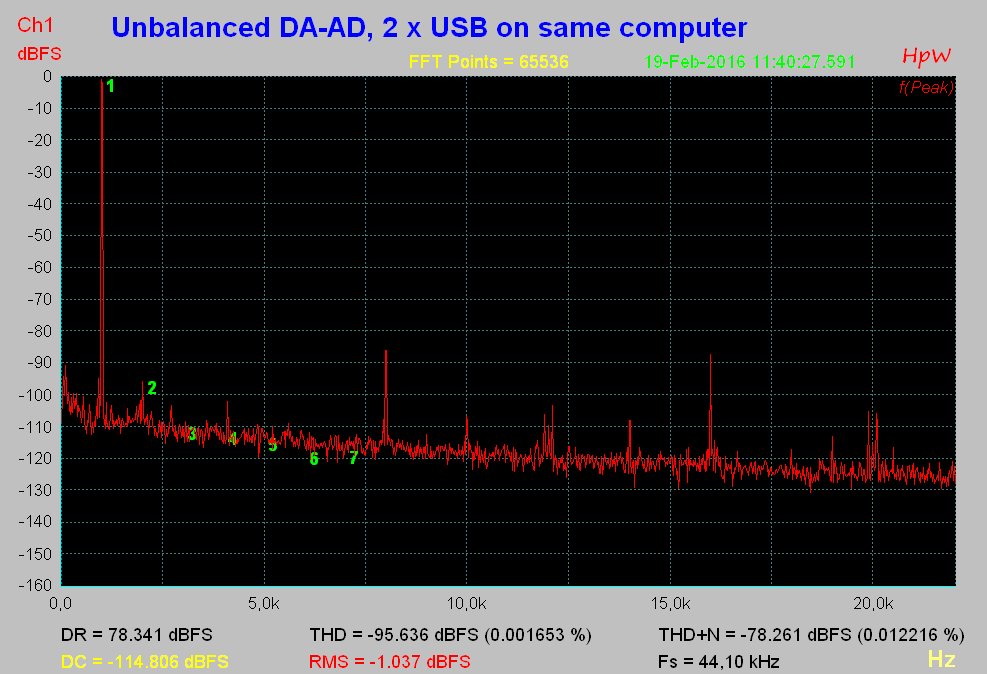
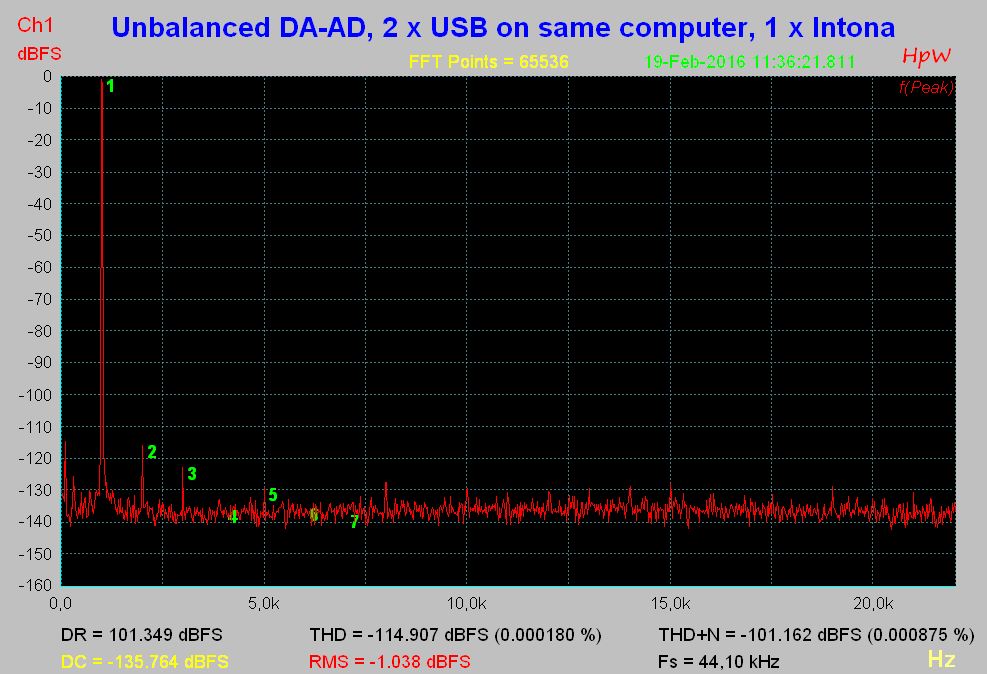
Cambridge Audio published jitter measurements demonstrating the impact of the PSU of a PC on the jitter performance. Obvious they have done nothing to shield their DAC.
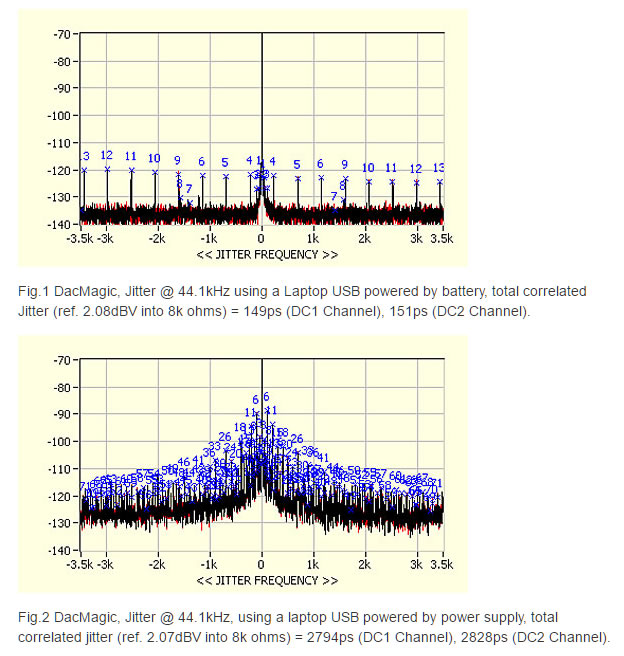
A different approach is used by Uptone Audio.
Their claim is that the noise generated by the PC is not the problem but the packet noise generated by the USB receiver of the DAC.
Feed it a very clean USB signal and packet noise will be reduced.
When the SI is very good, the PHY can turn off the pre-processing steps and easily determine the bits. As the SI degrades the PHY turns on different parts of the pre-processing as needed. Each of these steps takes a fair amount of power to operate, thus creating noise on the power and ground planes. The more processing the PHY needs to use to determine the bits, the more noise is generated. Thus part of the packet noise is directly related to the signal integrity of the incoming signal. The higher the SI, the lower the noise.
USB isolators can be found here.
Not all USB ports are born equal
A typical audiophile statement to explain audible differences between USB ports.
If you measure various ports on the same computer, they do indeed differ in the ripple on the power line.

As usual, Archimago has more
Intona Answer Database - Intona
Cambridge Audio Azur DacMagic D/A converter Manufacturer's Comments -Stereophile
Computer USB +5V Power Noise by Raoul Trifan - Archimago's Musings

